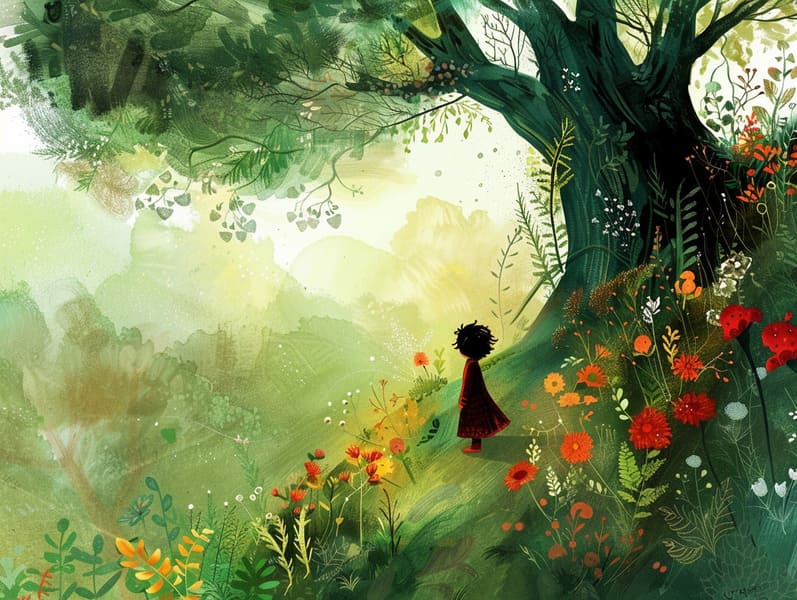Understanding the Legacy of Fairy Tales with Its Perpetual Delight.
Understanding the Legacy of Fairy Tales with Its Perpetual Delight.
Blog Article

Classic fairy tales have historical significance. These stories have been whispered from one generation to the next far before they were ever put on paper. They developed from a variety of civilizations, including American traditions. They were initially shared among adults, often carrying themes and messages reflective of the societal norms and beliefs of the time.
The famous Grimm duo, Jacob and Wilhelm Grimm, were among the first to collect many of these beloved fairy tales. Their compilation, "Grimm's Fairy Stories," included tales like "The True Bride," "Hansel and Gretel," and "Little Snow White," which have since become hallmarks in the world of timeless fairy tales. Similarly, Andersen's imaginative tales, such as "The Little Mermaid," and "The Story of the Ugly Duckling," have won hearts worldwide, securing their place in the pantheon of classic fairy tales.
Even though they are old, classic fairy tales remain as meaningful as ever, especially as children's bedtime stories. These whimsical stories are now available in numerous formats, including gorgeously illustrated books, magical animations, and digital fairy tales.
Their lasting presence can be linked to several charming aspects:
Significant Morals: Old fairy tales often share important moral lessons. Stories like "The Boy Who Cried Wolf" teach the virtue of truth, while "The Hare and the Tortoise" highlight the virtues of steadfastness and unpretentiousness. These narratives offer the young clear distinctions between moral and immoral, building their moral compass in a mild yet impactful way.
Compassion and Insight: Old fairy tales frequently illustrate individuals facing struggles and tests, inspiring children to understand with their struggles and boost their triumphs. For instance, "Beauty and the Beast" teaches us the importance of looking past the exterior to acknowledge the inner core of a character, developing awareness and appreciation.
Cultural Understanding: Many old fairy tales are infused with the cultural contexts from which they arose. Reading these tales can provide captivating looks into different traditions, promoting a sense of global understanding and awareness.
Imagination and Innovation: The imaginative elements in fairy tales—spells and potions—encourage children’s inventiveness. These narratives guide readers to supernatural realms, triggering creative dreams and a sense of enchantment that stays a lifetime.
Traditional fairy tales are not only alluring but also informative. They provide fascinating tools in advancing various cognitive and affective skills in young ones. When traditional fairy tales are narrated, they foster check here language development by offering new language and sophisticated sentence structures. This practice also boosts auditory perception and concentration, as the young track the narrative, expectant to see what happens next.
Furthermore, reflecting on the themes and characters of timeless fairy tales can cultivate cognitive skills and reasoning skills. Young readers are taught to pinpoint patterns, foresee events, and comprehend cause and effect. These explorations also contribute to young readers reveal their thoughts and feelings, cultivating their emotional intelligence.
In today’s digital era, the presence of digital storybooks has made these tales more reachable than ever. Internet resources and online apps feature vast collections of timeless fairy tales that can be read or heard anytime, anywhere. Fairy tales read out loud are particularly sought after, providing an fascinating method for children to take part in these spellbinding stories. Audio stories and voiced videos lead characters and settings to life, often paired with charming musical scores and harmonies that intensify the story adventure.
The enduring charm of classic fairy tales lies in their ability to adjust to contemporary times while preserving their essential themes. Contemporary reimaginings of these stories often feature more multicultural figures and modern settings, making them meaningful to today’s audience. However, the basic principles of fearlessness, generosity, and even-handedness remain unchanged, continuing to resonate with young readers of all ages.
Old fairy tales also offer a sense of familiarity and recognition. They provide a ordered narrative with a transparent beginning, middle, and end, often ending with the wrap-up of conflicts and the triumph of good over evil. This predictability can be consoling for kids, rendering a sense of constancy in an always shifting world.
Traditional fairy tales continue to bewitch and edify new generations, maintaining their wonder and applicability in modern society. As bedtime stories for kids, they grant a perfect blend of charm and enlightenment, encouraging moral values, empathy, and creativity. The prevalence of online storybooks and the popularity of fairy tales told out loud validate that these timeless narratives remain available to new generations.
By upholding and divulging these narratives, we continue to appreciate the rich tapestry of lore and cultural heritage. Whether you are experiencing a vividly illustrated book, browsing a digital collection, or listening on an spoken story, the attraction of Grimm's fairy tales is always within reach. These fairy tales remind us of the immortal impact of fairy tales and its ability to connect us across epochs and places.
Regardless if you are discovering a gorgeously illustrated book, enjoying a web-based collection, or listening through an voice book, the enchantment of children's fairy tales is always within reach.
These tales teach us of the immortal magic of tales and its ability to connect us across generations and cultures, establishing a link that charms and informs alike.